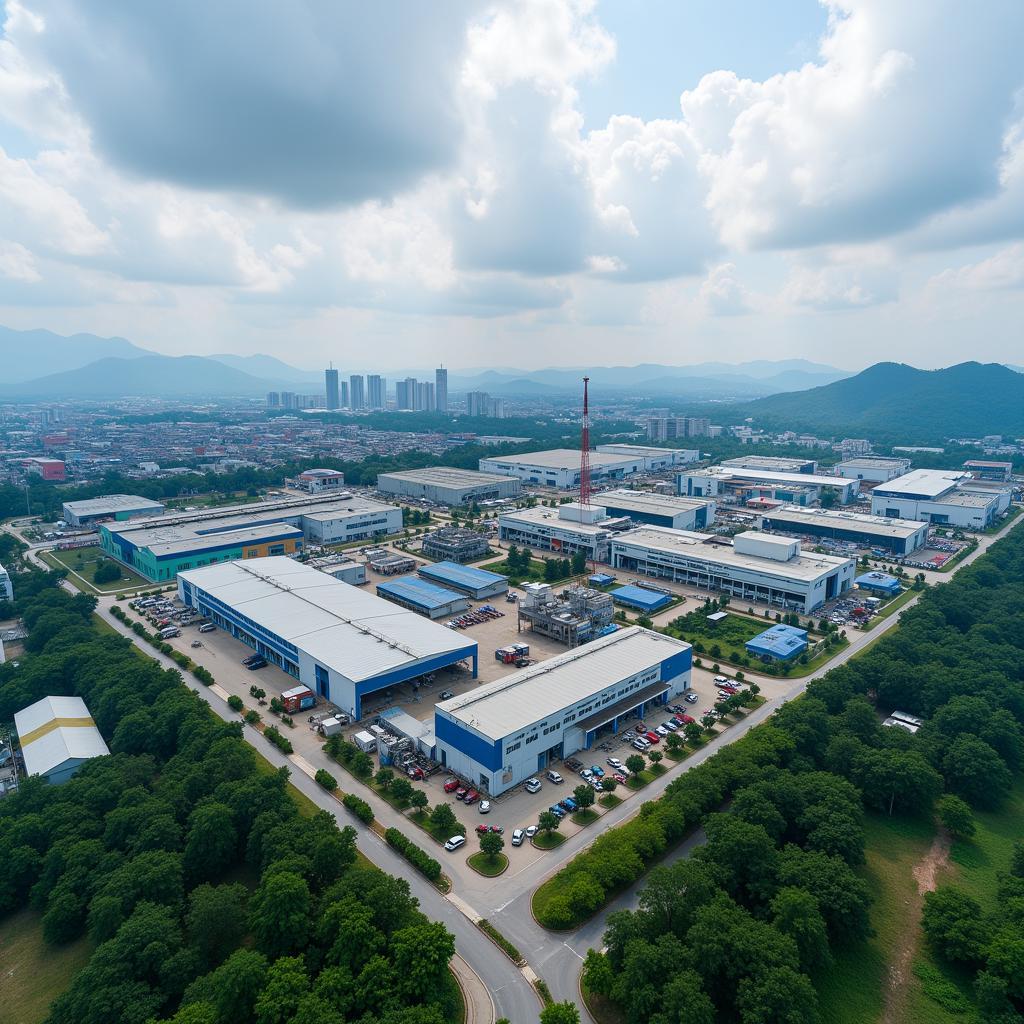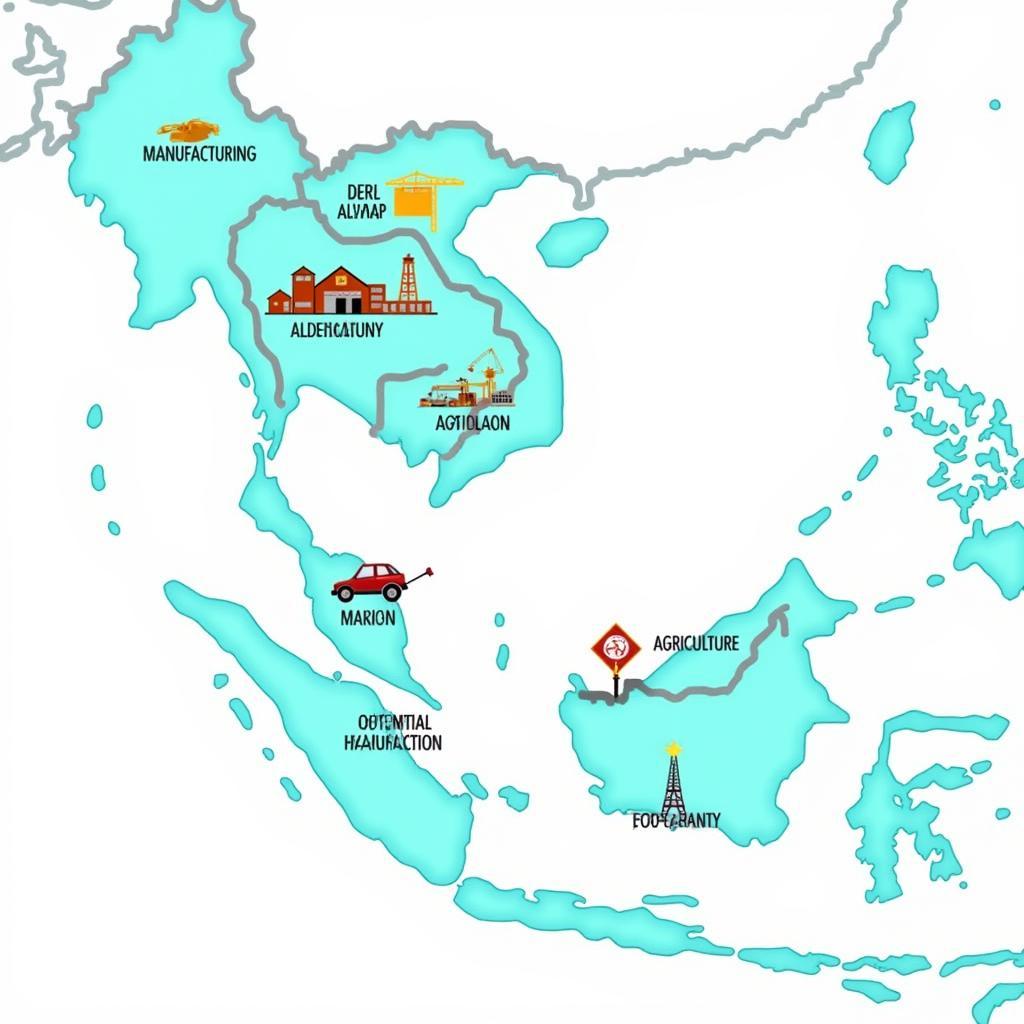ASEAN China plant investments are rapidly reshaping Southeast Asia’s industrial landscape. This article delves into the multifaceted dynamics of this growing trend, examining its impact on ASEAN economies, the driving forces behind it, and the potential challenges and opportunities it presents.
The Rise of ASEAN as China’s Manufacturing Hub
China’s increasing labor costs, coupled with ASEAN’s strategic location, favorable trade agreements, and young, dynamic workforce, have made the region a prime destination for Chinese manufacturers. This shift has led to a surge in ASEAN China plant investments across various sectors, from electronics and textiles to automotive and renewable energy.
These investments are not just about cost savings. They represent a strategic move by Chinese companies to diversify their supply chains, gain access to new markets, and mitigate risks associated with geopolitical uncertainties. asean and regional free trade agreements play a key role in this strategy.
What’s Driving the Investment?
Several factors contribute to the attractiveness of ASEAN for Chinese manufacturers:
- Competitive Labor Costs: While wages are rising in ASEAN, they remain significantly lower than in China, offering a cost advantage for labor-intensive industries.
- Strategic Location: ASEAN’s proximity to China and its access to key shipping routes make it an ideal location for export-oriented manufacturing.
- Favorable Trade Agreements: The ASEAN China Free Trade Area (ACFTA) and other regional agreements provide preferential tariffs and reduced trade barriers, further incentivizing investment.
- Growing Consumer Market: ASEAN’s burgeoning middle class represents a significant and growing market for Chinese goods.
- Government Incentives: Many ASEAN countries offer attractive investment incentives, including tax breaks and streamlined regulatory processes, to attract foreign investment.
 Chinese Manufacturing Plant in Vietnam
Chinese Manufacturing Plant in Vietnam
Challenges and Opportunities for ASEAN
The influx of ASEAN China plant investments presents both challenges and opportunities for the region. On the one hand, it can lead to job creation, technology transfer, and economic growth. On the other hand, it also raises concerns about environmental sustainability, labor standards, and potential over-reliance on Chinese investment. Navigating these complexities requires careful planning and strategic policymaking.
Balancing Growth with Sustainability
One key challenge is balancing economic growth with environmental protection. The rapid industrialization spurred by Chinese investment can strain natural resources and contribute to pollution if not managed sustainably. ase electronics plant 2 is a relevant example. ASEAN nations need to prioritize sustainable development practices and enforce environmental regulations to mitigate these risks.
Ensuring Fair Labor Practices
Another crucial aspect is ensuring fair labor practices and decent working conditions in Chinese-owned factories. While these investments create jobs, it’s essential that workers are treated fairly and receive adequate wages and benefits. Strengthening labor laws and promoting social dialogue are vital to achieving this.
“The influx of Chinese investment presents a unique opportunity for ASEAN to accelerate its industrial development,” says Dr. Linh Nguyen, an economist specializing in Southeast Asian economies. “However, it’s crucial to prioritize sustainable and inclusive growth to ensure that the benefits are shared by all.”
The Future of ASEAN China Plant Investments
The trend of ASEAN China plant investment is expected to continue in the coming years, driven by both push and pull factors. As China seeks to upgrade its industrial base and move up the value chain, ASEAN countries are well-positioned to capture a larger share of global manufacturing.
“ASEAN needs to focus on developing skilled labor, improving infrastructure, and fostering innovation to attract higher-value-added investments from China and other countries,” adds Professor Wei Zhang, a leading expert on China’s outward investment.
analise das economias da china e paises da asean provides further insights into this dynamic relationship.
Conclusion
ASEAN China plant investments are transforming the region’s economic landscape, offering both significant opportunities and potential challenges. By adopting proactive policies, promoting sustainable development, and fostering regional cooperation, ASEAN can harness the full potential of this trend and create a prosperous and inclusive future.
FAQ
- What are the main sectors attracting ASEAN China plant investment?
- How do ASEAN countries benefit from Chinese investment?
- What are the potential risks of over-reliance on Chinese investment?
- How can ASEAN ensure sustainable development in the face of rapid industrialization?
- What role do free trade agreements play in facilitating Chinese investment in ASEAN?
For support, contact us at Phone Number: 0369020373, Email: aseanmediadirectory@gmail.com, or visit our address: Thon Ngoc Lien, Hiep Hoa, Bac Giang, Vietnam. Our customer service team is available 24/7.

